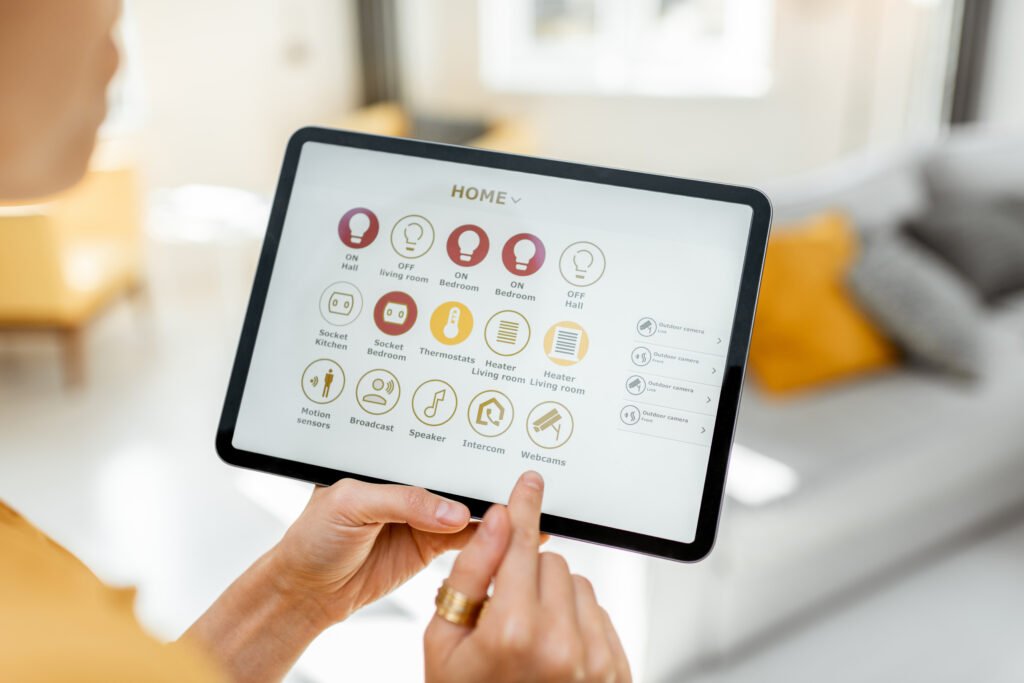
Smart home devices are becoming increasingly popular and can now be found in many households. But only half of the owners take steps to secure the devices sufficiently. Find out the risks and how to protect yourself against them.
Found in the U.S., half of all family households own a smart home device. 98% of respondents care about their privacy, but half are not taking important steps to protect their data.
You should be concerned about your data. As more and more of your devices are connected to the Internet and networked with each other, the risk increases that they will serve hackers as a gateway into your home network.
A smart lamp alone can collect large amounts of data and send it unencrypted to the manufacturer. In this way, cloud providers, manufacturers, and suppliers can access data such as WLAN passwords or the exact location of the lamp (including the exact room).
It may be moderately interesting for the manufacturer to know where a light bulb is hanging. A hacker also has little use for simply switching the light on or off. But he can use a smart light bulb – or any other device connected to the WLAN – to install malware on the device or read out the WLAN password. This opens up the entire network and the hacker can access your private information.
In addition, smart homes can offer criminals a way to break into homes in a more targeted manner. They can use smart devices to learn when residents are usually home. They can use security cameras to scout the inside of the house and the surrounding area, or they could use them to pick smart door locks in advance.
The light bulb was one example to demonstrate the vulnerability of a smart home. The list could go on and on; for example, the number of vacuum cleaner robots in households continues to increase. With these, there is an exchange of data between the app and the cloud, which does not always have to be encrypted. Hackers can intercept and manipulate the exchanged information, for example, with a man-in-the-middle attack.
Despite everything, many do not want to do without the benefits of a smart and connected home because it can lead to energy savings (smart radiator thermostat) and more comfort (automatic switching on of lights, smart door locks), among other things.
To protect yourself, there are several tools and measures you can use. Find out more below.
Four steps to optimally protect your smart home
- Use a VPN
With a VPN (virtual private network), you encrypt your data traffic so that hackers can’t read or steal sensitive data from you. In addition, your IP address remains hidden since you temporarily receive the IP address of the VPN server to which you connect.
It is also worth looking for premium VPN providers. In addition to the usual VPN benefits, these also have numerous additional security features.
For example, HotBot VPN blocks trackers, viruses, advertisements, and harmful websites for you.
There is also the option of a VPN router – a great advantage for protecting smart devices, as it places every connected device under the VPN protection umbrella. In this way, not only the PC, smartphone and iPad are protected, but also the TV, vacuum cleaner robot or security camera.
But please note: A VPN cannot be installed on every router. Find out in advance on which devices and with which provider it is possible.
- Secure passwords
With many smart home devices, you need access data for an account within the provider’s app, among other things, to access stored data in the cloud. Since this can be very sensitive information, such as the images from your surveillance camera, you should choose a secure and individual password. 123456, your date of birth or a password you already use for 15 other accounts are unsuitable.
- Install updates regularly
Most manufacturers regularly provide their devices with updates. These are not only to add new features to a device or app but to fix known security vulnerabilities.
As soon as such an update is available, install it. Many manufacturers offer to install updates automatically (overnight, for example). It would be best if you used this option.
- Find out about manufacturers in advance
Unfortunately, the smart home sector is flooded with a lot of cheap products that are not always reliable or trustworthy. Before you buy a device, you should find out more about the manufacturer online and read up on comparison portals and reviews.
It is better to spend a bit more money with the certainty that your data is safe.
Summary
A smart home is a great thing, many actions can be controlled by voice or automatically according to a schedule. However, security should not be left out of the equation.






Comments closed.